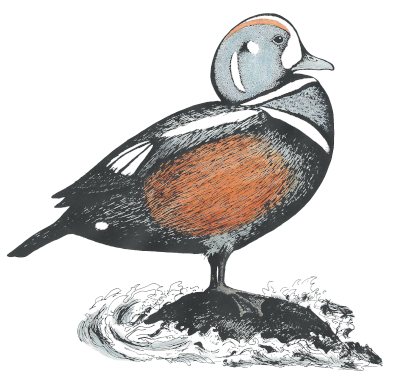
Cupressaceae - cedar or cypress family
Leaves are simple and arranged in opposite, decussate pairs or in whorls of 3 or 4. They are entire, linear, and spreading, or they are scale-like and adnate, completely hiding the stem. Leaves of the cypress family are evergreen and usually long-persistent.
Cones are frequently produced in great numbers. Members of the Cupressaceae are monoecious or dioecious shrubs or trees. Pollen cones are catkin-like. Seed cones usually mature in their first season.
Maine is home to 5 species in 3 genera (hybrids excluded). If you know which species you have or are interested in learning about, click on the appropriate link from the species list below. Otherwise, to determine which genus your plant belongs to, refer to the table below the species list.
Chamaecyparis (1 species)
Chamaecyparis thyoides - Atlantic white cedar
Juniperus (3 species)
Juniperus communis var. depressa - common juniper
Juniperus horizontalis - creeping juniper
Juniperus virginiana var. virginiana - eastern red cedar
Thuja (1 species)
Thuja occidentalis - northern white-cedar
| red font = character state unique or nearly so | char. 1 | char. 2 | char. 3 | char. 4 | char. 5 | char. 6 |
| Chamaecyparis thyoides | ||||||
| Juniperus | ||||||
| Thuja occidentalis |
Chamaecyparis (Atlantic white cedar)
[information to be added]
Chamaecyparis thyoides (Atlantic white-cedar) - [information to be added]
Juniperus (juniper)
About 50 species occur worldwide in the genus Juniperus. A distinct feature of this genus is the berry-like blue or blue-black cone. Resinous juices of this “juniper berry” have been used for flavoring gin (though some species of the genus are considered too bitter or, in certain cases, toxic and thus not appropriate to use as a spice). Members of this group have shreddy bark, and seeds of Juniperus are wingless. The name Juniperus is derived from a Latin word for juniper itself.
| red font = character state unique or nearly so | char. 1 | char. 2 | char. 3 | char. 4 | char. 5 | char. 6 |
| Juniperus communis var. depressa | ||||||
| Juniperus horizontalis | ||||||
| Juniperus virginiana var. virginiana |
Juniperus communis var. depressa (common juniper) occurs commonly in Maine, with a shrubby habit and in a range of habitats (especially exposed rocky areas; see image below left). Leaves are needle-like and arranged in whorls of three (see image below right). Its bark is thin, dark reddish brown, and peels into papery scales. Juniperus communis is dioecious; that is, pollen cones and seed cones occur on separate plants. Cone development time varies but generally occurs between April and June. Common juniper can live to be over 160 years old. This plant was first described by Carl Linnaeus, the father of modern taxonomy, and the binomial still stands to this day. The specific epithet communis is Latin for “common” or “in common”.
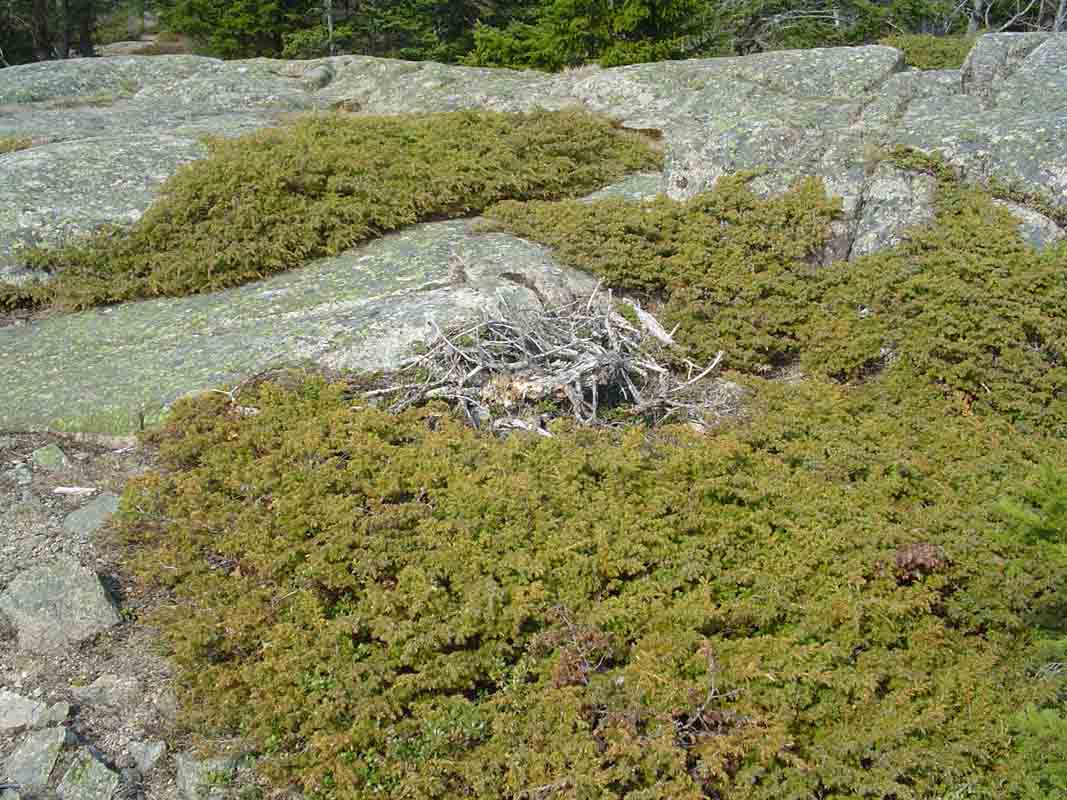
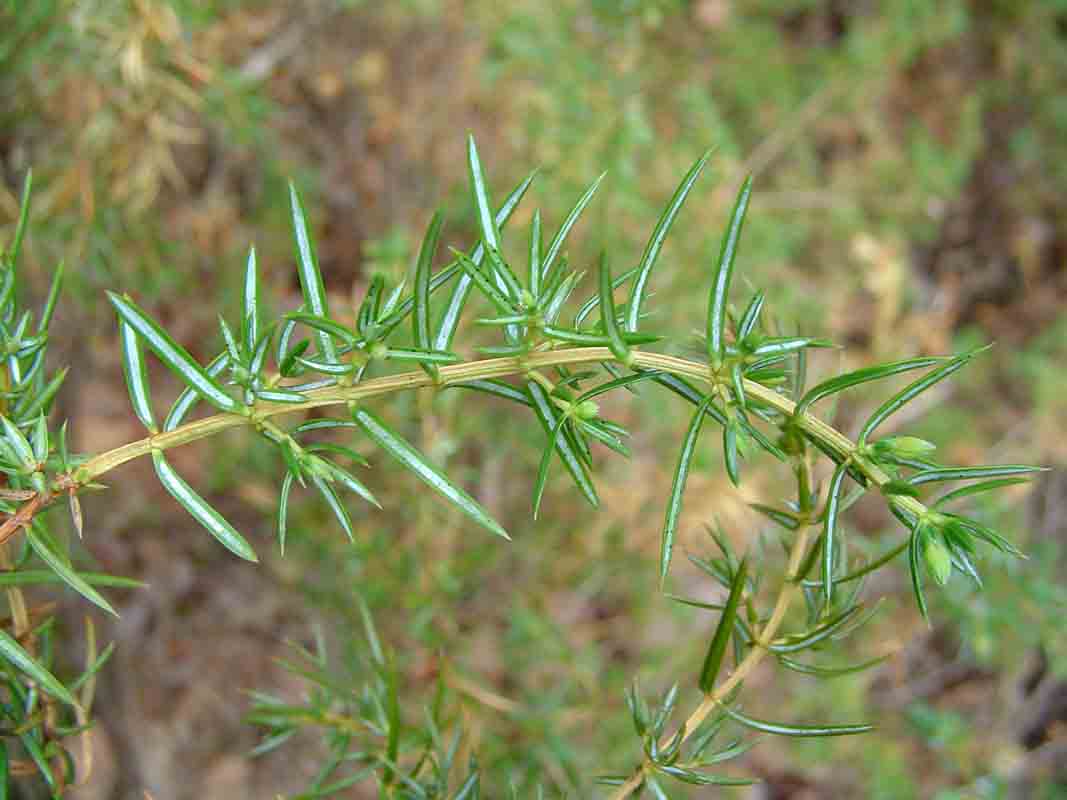
(click on an image to enlarge)
Juniperus horizontalis (creeping juniper) is a small shrub. The adult leaves are opposite, decussate, appressed, and scale-like, turning somewhat purple in the cold months. Bark is thin, scaly, and shredding. Juniperus horizontalis is dioecious. In New England, cones are produced in July. Creeping juniper can live to be over 130 years old. The specific epithet is derived from a Greek word meaning “horizon” or “bound”, thus Juniperus horizontalis is named for its prostrate habit.
Though not a wild plant, “Bar Harbor juniper” is a clonal cultivar of Juniperus horizontalis that originated from Mount Desert Island and is cultivated widely for its fast growth and tolerance of salt spray. Below are images of the native plants.


(click on an image to enlarge)
Juniperus virginiana var. virginiana (eastern red cedar) - [information to be added]
Thuja (arborvitae)
There are five species worldwide of Thuja. There is some uncertainty as to the origin of the name. The Dictionary of Word Roots and Combining Forms by Donald J. Borror and Gray’s Manual of Botany (8th edition) both claim Thuja is derived from the Latin word for some ancient evergreen(s) called tree-of-life (arborvitae), named for their medicinal properties. However, the Dictionary of Plant Names by Allen J. Coombes says Thuja is derived from a Greek name for, interestingly enough, juniper. Seed cones of Thuja are few-scaled and leathery. The thin-coated seeds are winged.
Thuja occidentalis (northern white-cedar) is a common tree in Maine. The bark is fibrous and sometimes shredding (see image below left). The scale-like leaves are opposite and decussate. The foliage is arranged in flattened, fan-like, feathery sprays (see image below right). Thuja occidentalis is monoecious; that is, pollen cones and seed cones occur on the same plant. Seed cones are fully developed by August and open around September. This plant can live to be over 800 years old. This is yet another plant in the Cupressaceae that was first described by Linnaeus, with the binomial still used in modern taxonomy. Although T. occidentalis is commonly called “northern” white-cedar, the specific epithet is a Latin word meaning “western”.
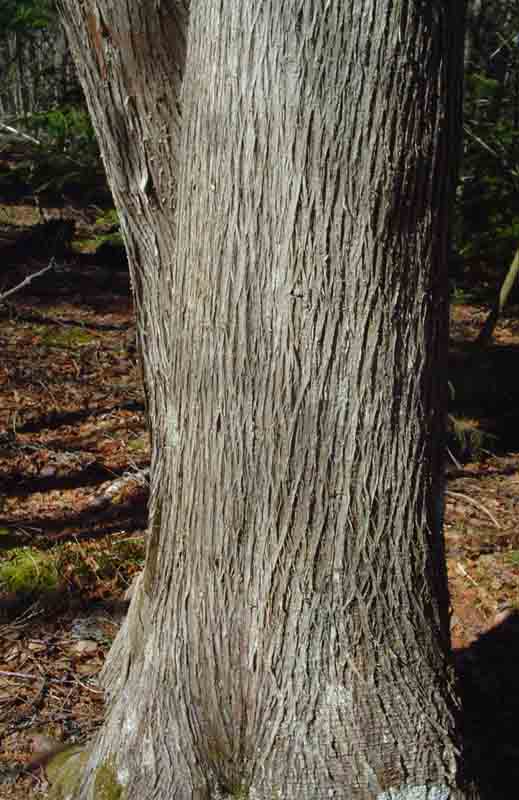
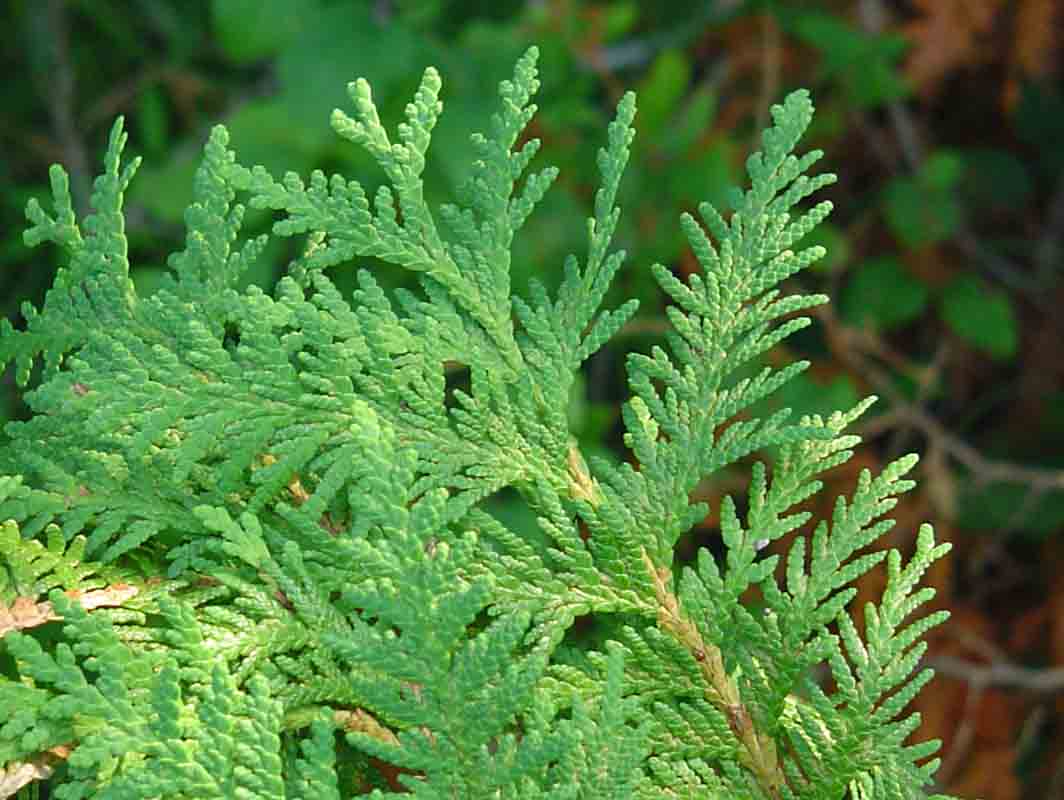
(click on an image to enlarge)
Note:
1. Taxonomy and nomenclature follow Flora Novae Angliae by Arthur Haines (2011, Yale University Press, ISBN 978-0-300-17154-9).